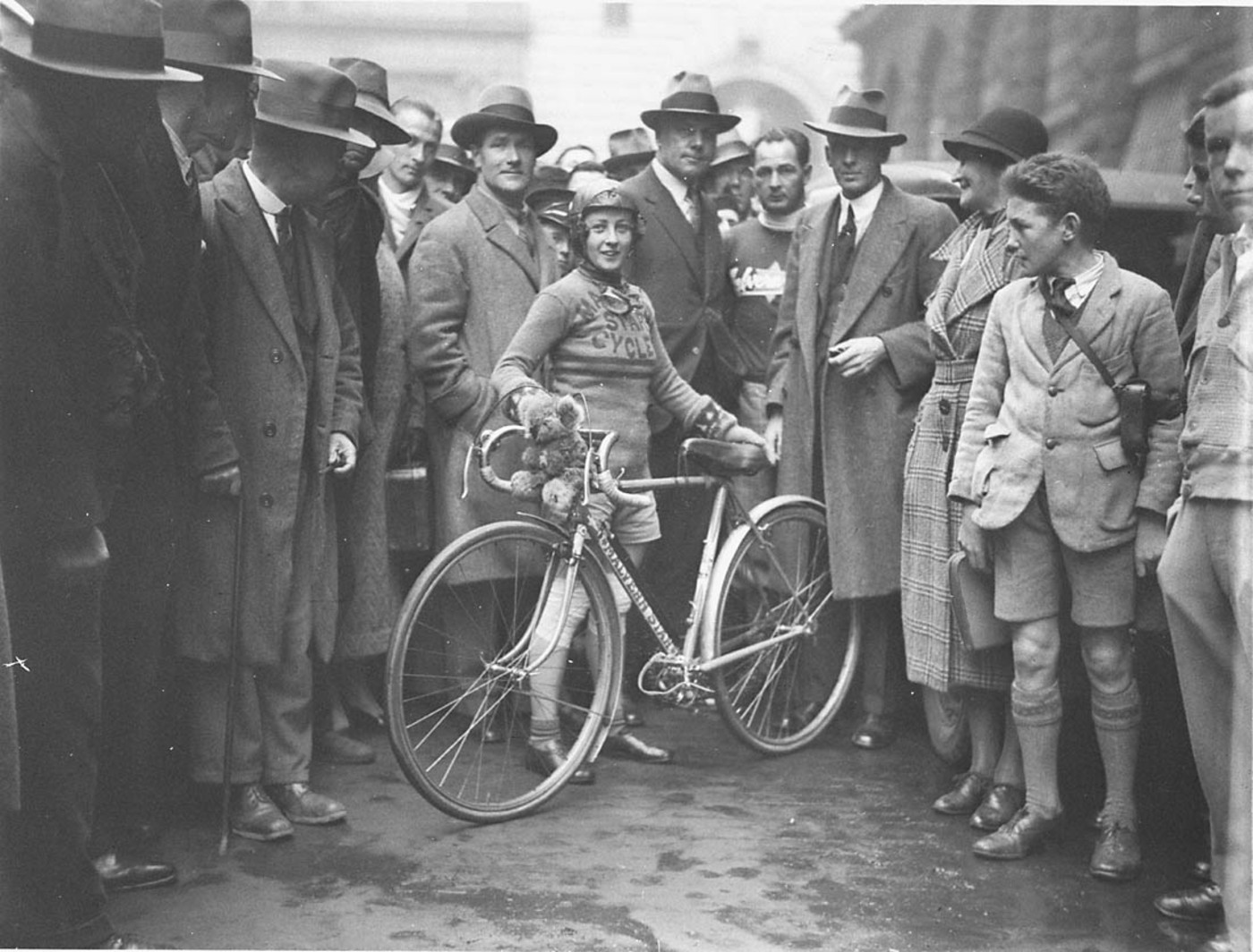 he history of science records that, shortly after 1800, that is, in 1816, a German baron, Karl Drais von Sauerbronn, invented Laufmaschine, a “running machine”. If the aristocrat did not even pass to order a special suit to ride the new two-wheel vehicle, using only the horse, the young people were delighted by this means of travel, so they gave up the layers of clothing one by one in order to ride more comfortably.
he history of science records that, shortly after 1800, that is, in 1816, a German baron, Karl Drais von Sauerbronn, invented Laufmaschine, a “running machine”. If the aristocrat did not even pass to order a special suit to ride the new two-wheel vehicle, using only the horse, the young people were delighted by this means of travel, so they gave up the layers of clothing one by one in order to ride more comfortably.
The creation of Bicycles (velocipede)
Before we talk about the costumes of cyclists, it is imperative to mention a few things and the history of this means of transport. It is said that by 1816, a German baron by the name of Karl Drais von Sauerbronn, had invented the bicycle, in fact, a wooden frame with two wheels, which advanced only if the user stuck his feet into the ground pushing hard. The inventor hoped that his invention would be an effective horse replacement and eliminate the cost of oats, which had become considerably high.

Presented in Paris two years later, under the name of draisienne (in French, the name now carried by the light vehicle traveling on the train tracks), in honor of its inventor, the velocipede aroused wonder, but also curiosity, especially among young aristocrats who saw in the machine a new possibility of fun.
Fashion on two wheels
In England, the velocipede was introduced by Denis Johnson, a riding coach from London, who also opened the first bicycle riding school. Soon, London society was engulfed in the madness of two-wheel drive.
By 1870, the appearance of a gentleman on a bicycle with a big wheel and a small wheel was a sign of virility and special physical skills, but for women, the habit of riding a bicycle was considered inappropriate. In the Victorian era, it was considered indecent for a lady to pedal in public on such machinery, especially since the risk of being picked up from the ground was very high.
There were then proposed alternatives of bicycles that are more fanciful, from those with pedals on the same side to the tricycle with large parallel wheels. But even the appearance of the latter did not solve the problem of clothing, which caused women (tri) cyclists serious accidents. But in 1881, even Queen Victoria of the United Kingdom ordered tricycles for her daughters at their insistence. In these conditions, the image of the woman on the bicycle received royal blessing.

Social pressures had become very high, with women being the most ardent supporters of cycling, but the solutions proposed by the stylists, as well as by the moralists of the Victorian period, were quite nauseating. Thus, the ladies were advised to grab their dresses with the help of buckles around the indecent ankles so that they could not be seen when pedaling. These buckles were to be removed on the descent of the lady on the bicycle, the dress returning to its normal appearance.
The Society of Rational Dresses
In America, the first bicycles were manufactured in 1878. Although women were reluctant to experiment with the new vehicle, doctors considered the habit unhealthy. But the unlimited desire of the ladies to travel with the new vehicle forced the stylists to put on the market the “rational dress,” seeing in this a new possibility to make money.

A precursor of this dress was Amelia Bloomer, who stirred up an article published in the feminist magazine “Lily”. She recommended that Europeans take the example of the Turks, considering that their clothing is more practical and can be adapted relatively easily to cycling. Amelia proposed a two-piece suit, trousers, and dress worn over each other. That is tight slacks around the ankles and dress cut at the knees. This type of clothing that offered the image of a riding body on a machine was, however, shockingly associated with the idea of immorality and regarded as an exacerbation of sexuality.
Even if fashion did not catch on before the end of the 19th century, specialized magazines abounded in clothing proposals for enthusiastic cyclists. The imagination of the tailors was probably stimulated by the establishment of the Society of Rational Dresses, which was to find a compromise between clothes and the strict morality of that era. The British members of this company were proposing to give up the corset, adopt a pants-skirt down to the knees and continue with a cotton or wool sock to allow comfortable pedaling.
At the top, the ladies could wear a slightly longer waistcoat (a kind of cardigan) that would cover their hips and, of course, the endless hat. In this way, the members of the society argued, the ladies would make fewer and wider movements than the previous ones because the overlapping layers of clothes and linen condemned them to inefficiency. However, the press of the time still told about the terrible accidents with bicycles, so no clothing was really imposed until the modern period.
Men’s Fashion
For gentlemen, the torments of riding a bicycle were lower. They went from riding clothes to t-shirts and shorts in wool and cotton.
Until 1900, the gentlemen’s clothing consisted of black wool pants to hide the stains of dirt lined with deerskin. Woolen garments were considered superior to cotton because they better absorbed the sweat resulting from the effort, so the men wore a wool vest over the cotton shirt. The downside was that the wool does not allow air to pass through the fibers and, therefore, to ventilate the body. As the heat did not dissipate, the woolen clothes quickly became torture, not to mention the smell.

A real revolution took place in 1940 when the Italian tailor Armando Castelli invented the silk shirts. These were considered cooler, and, in addition, the paint had greater adhesion to the material, which proved important in the development of professional cycling. The participants in the competitive life could become, in these conditions, real advertising panels, to the delight of the sponsors.

In 1958, combining polyester with elastic, chemist Joseph Shivers (1920–2014), from Du Pont’s Benger lab, invented Lycra (spandex, as it is called in the United States, an anagram from expands, or elastane, as it had been said in other countries), stronger and more durable material than rubber. Lycra began to be used on an industrial scale in 1962, and his career is far from over.
Since then, cyclists have abandoned wool and cotton in favor of new synthetic, aerodynamic materials molded on the body and printed in bright colors. Borrowed as if from an SF movie, the bikers’ outfits (of which the glasses with miniature lenses clamped with a rubber strap and the inevitable hard plastic helmet) are extremely recognizable today.
Avid Writer with invaluable knowledge of Humanity!
Upcoming historian with over 30 million views online.
“You make your own life.”





